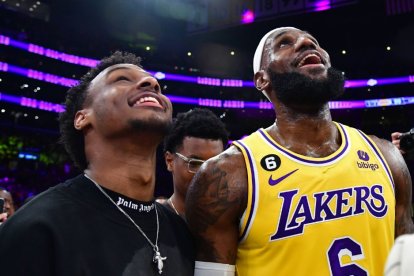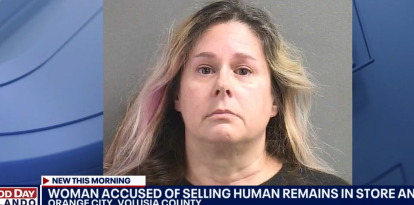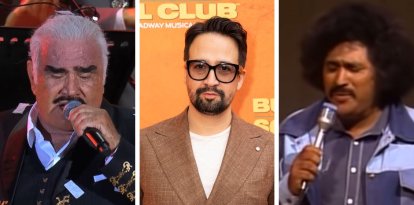Here's how Vince Iwuchukwu's case was key to saving Bronny James' life
The University of California staff saved the legendary basketball player's son's life, and they had the experience and expertise to do it thanks to a previous incident.

(Cordon Press)
This past Monday, July 24, was nearly a tragic day for the James family. Bronny, LeBron James' oldest son, was practicing basketball with his team at the University of Southern California when he suddenly collapsed. He suffered cardiac arrest, which triggered the quick response of the university staff, who quickly called 911 while performing cardiopulmonary resuscitation (CPR) maneuvers. This fast and wise decision was vital in the recovery and now discharge of young Bronny.
It turns out that the successful response to the crisis was not improvised. They had practiced this life-saving procedure on July 1, 2022, when in almost an exact duplicate scenario, athlete Vince Iwuchukwu collapsed on the court during a summer training session at the Galen Center. The USC training staff choreographed the following: one administered CPR, one called 911, and one retrieved the automated external defibrillator (AED) off the main court.
Dr. Michael Ackerman, a genetic cardiologist at the Mayo Clinic, analyzed the case and said USC's response to Bronny James' collapse was "masterfully executed." The legendary basketball player's son was discharged on Friday, and his progress is more than promising.
In more detail, Dr. Shephal Doshi, director of cardiac electrophysiology and pacing at Providence St. Luke's Health Center, said resuscitation maneuvers must be performed as quickly as possible to have an effect.
It took less than a minute to perform CPR on Iwuchukwu while unwrapping the AED and placing pads on his chest. After the AED hit, the athlete regained consciousness instantly, opening his eyes and groaning loudly.
"With something like this, where it's a do-or-die situation, to perform under pressure and do what they're trained to do at that level, it's really incredible," USC coach Andy Enfield said earlier this year. "They gave Vince incredible care, as quickly as possible in a situation like that," he added.
The role of the defibrillator is fundamental. When someone suffers an accident of this type, they need to regain consciousness as quickly as possible so that the brain is not without blood, i.e., oxygen, for too long. "After a few minutes without blood to the brain, you will have brain problems. That's why every second counts. That's why they have defibrillators," said Dr. Cheng-Han Chen, medical director of the structural heart disease program at Pacific Cardiovascular Associates Medical Group at MemorialCare Saddleback Medical Center.
Will James be able to play again?
In Iwuchukwu's case, his doctors told him he would never be able to step onto a basketball court again. However, another specialist told him there was a chance. He had to undergo surgery to have an implantable cardioverter defibrillator (ICD) installed in his chest. With this device, the university can continuously monitor his heart rate.
Moreover, in the unlikely event of a recurrence of such an episode, USC can reactivate his heart through the device without resorting to a regular defibrillator. Within six months, Iwuchukwu was back on the court.
While James' case is more uncertain, what is known for sure is that he is alive thanks to the excellent response of the USC medical team, previously tested in the case of Iwuchukwu.
RECOMMENDATION





















